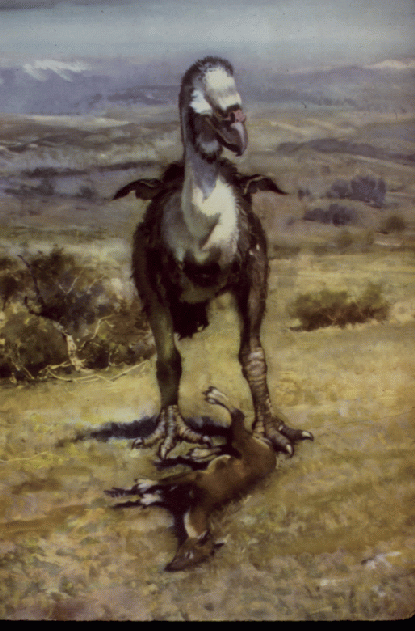By Erik Stokstad
ScienceNOW Daily New
25 October 2006
A leg bone, called the tarsometatarsus, was found with the skull. Whereas the same bone in a terror bird called Paraphysornis is only 31.5 cm long, the new leg fossil measures 43.7 cm long. The bone's slenderness indicates that the creature was "a relatively swift runner," Chiappe says. The new find counters the traditional notion that terror birds always became stockier when they evolved to larger sizes, he adds. And big it was: Extrapolating from the leg bone, Chiappe and colleague Sara Bertelli estimate that the newly discovered bird stood 3 meters tall.
Chiappe and Bertelli say the 15-million-year-old fossil is a novel species, but they haven't yet disclosed the name they've picked for it. They'll do that in a longer paper, which they have submitted to the Journal of Vertebrate Paleontology.
Julia Clarke of North Carolina State University in Raleigh notes that the new fossil adds to the diversity of terror birds. "You can have a large animal that's built for speed," she says. Herculano Alvarenga of the Museu de Historia Natural de Taubaté in São Paulo, Brazil, says that terror birds such as Brontornis probably ate carrion, but that the longer-legged ones were good runners and hunters.



No comments:
Post a Comment